
December 21, 2025
Discover best procedures for aging skin today
Explore best procedures for aging skin - from non-invasive treatments to surgical options - and see downtime, costs, and results.
Nov 6, 2025
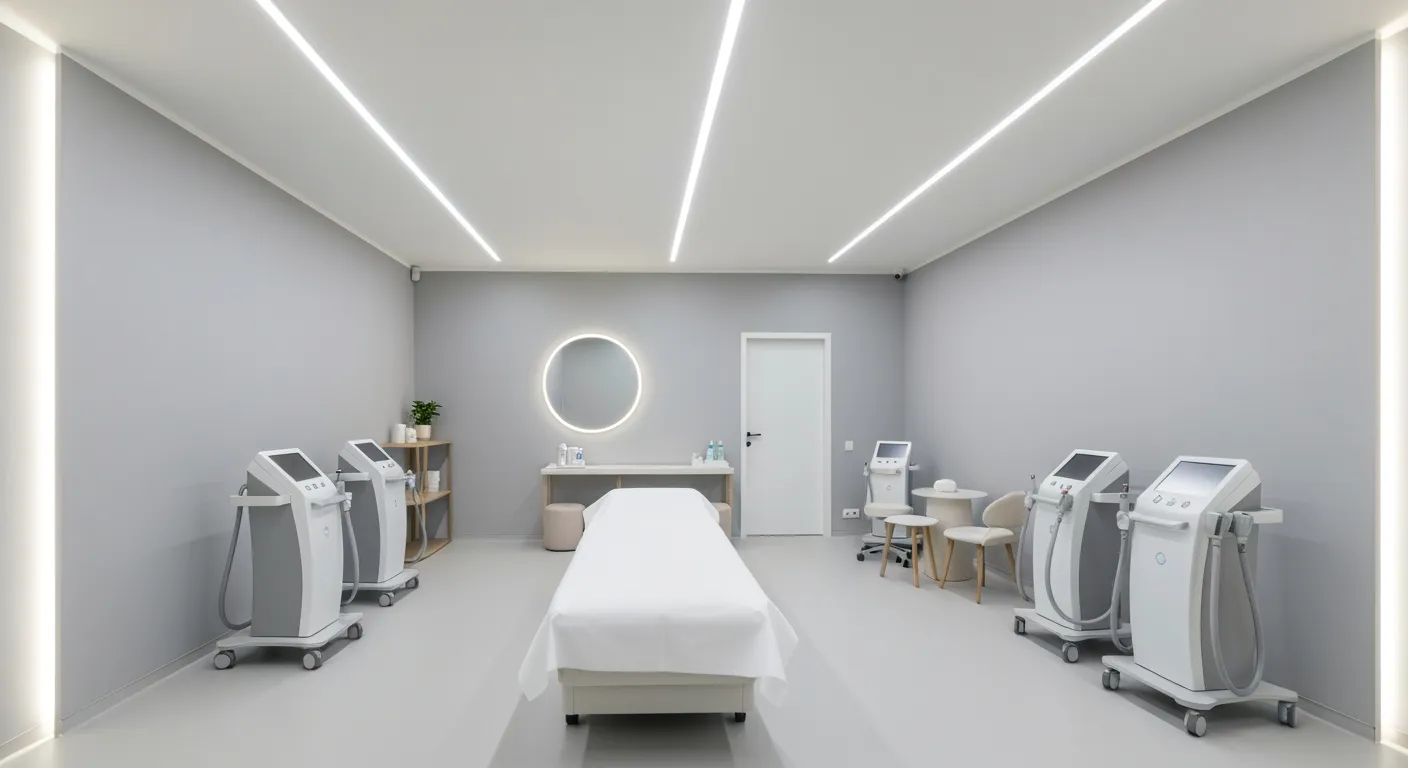
Non-invasive laser treatments are advanced cosmetic procedures designed to improve various skin concerns without damaging the surface layer of the skin. These treatments use precise laser technology to gently stimulate collagen production by delivering controlled heat beneath the skin. This process promotes skin tightening, reduces wrinkles, and enhances overall skin texture, helping patients achieve a more youthful and radiant appearance.
Patients commonly seek non-invasive laser treatments to address a range of aesthetic issues, including age spots, scars, sun-damaged skin, and fine lines or wrinkles. These procedures are particularly valued for their ability to correct skin imperfections while minimizing downtime and discomfort.
Successful outcomes depend heavily on a personalized approach tailored to each patient’s unique skin condition, health history, and aesthetic goals. Prior to treatment, a thorough evaluation by a qualified dermatologist or cosmetic surgeon ensures the safest and most effective plan. This individualized care optimizes skin rejuvenation while minimizing risks and complications, supporting patients’ confidence and satisfaction throughout their treatment journey.
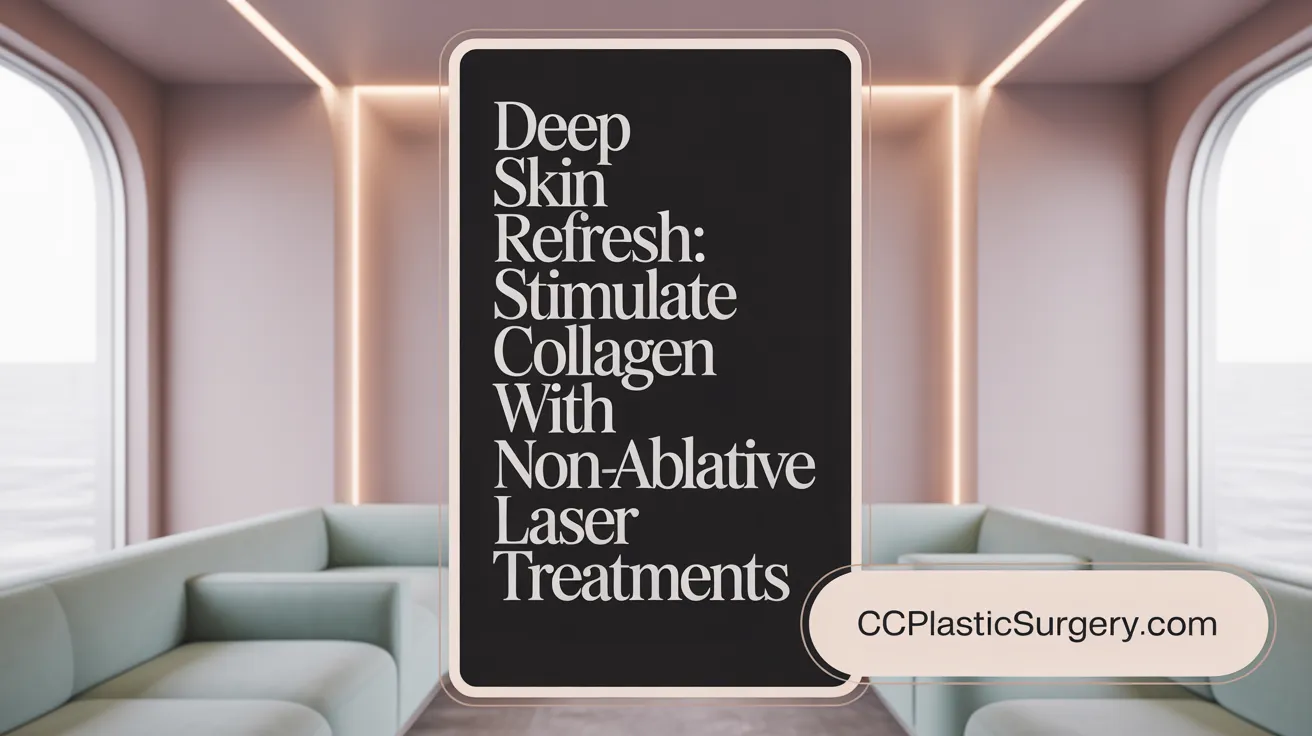
Non-ablative laser treatments improve skin by generating heat within the deeper layers without harming the surface. This controlled heating triggers increased collagen production with laser, which tightens skin and reduces wrinkles, age spots, scars, and sun damage—resulting in a more youthful appearance.
These treatments often employ fractionated laser technology delivering heat through thousands of tiny microthermal treatment zones. This approach spares surrounding tissue, promoting faster healing, less recovery time, and fewer complications compared to traditional lasers.
Commonly treated conditions include:
Non-ablative laser rejuvenation is generally safe, especially when performed by board-certified plastic surgeons like those at Cape Cod Plastic Surgery. Side effects are usually mild and transient, including redness, swelling, and slight changes in skin pigmentation. Serious risks like scarring or infection are rare.
Recovery is minimal, with many patients returning to work immediately after treatment. Redness can be easily concealed with makeup. Post-care includes moisturization, sun avoidance, and daily use of SPF 30 or higher sunscreen. Multiple sessions are typically required to achieve optimal and lasting results.
Cape Cod Plastic Surgery offers advanced laser treatments including non-ablative laser rejuvenation. This procedure generates heat within the skin to stimulate collagen production without damaging the surface. It effectively treats wrinkles, age spots, scars, and sun damage, combining minimal downtime with personalized, safe aesthetic care tailored to each patient.

Before undergoing non-ablative laser rejuvenation, patients should avoid tanning and excessive sun exposure to reduce the risk of pigmentation changes. It is advisable to refrain from using perfumes, deodorants, and irritating skincare products prior to the procedure. Patients should also avoid blood-thinning medications unless otherwise directed by their healthcare provider. A thorough review of medical history, including skin conditions and prior treatments, is essential to identify any contraindications such as cold sore outbreaks or chronic health issues. See more on pre-treatment care guidelines.
Patients are typically advised to disclose all medications and supplements to their dermatologist, particularly those that affect skin sensitivity or healing. Those with a history of cold sores may require antiviral prophylactics. Individuals with unrealistic expectations or certain chronic conditions may not be suitable candidates, emphasizing the need for personalized consultation to align treatment goals and outcomes. Learn about laser resurfacing contraindications and candidate suitability.
Post-treatment care focuses on supporting skin healing and protecting the treated areas. Keeping the skin well-moisturized helps prevent dryness and irritation. Patients should avoid sleeping on the treated area to reduce swelling. Sun protection is critical; broad-spectrum SPF 30 or higher sunscreen should be applied daily, and direct sun exposure must be minimized during recovery to prevent pigmentation changes and other complications. Additional details on post-treatment skin care and post-procedure sun protection are available.
Minimizing risks involves both adequate preparation and adhering strictly to post-care instructions. Patients should avoid tanning, direct sunlight, and irritating cosmetic products before and after treatment. Using cold compresses can alleviate discomfort and reduce swelling. Makeup can be used post-procedure to camouflage temporary redness, allowing many patients to return promptly to daily activities. Close follow-up with the treating clinician helps monitor healing and manage any side effects. See more about risks and side effects of laser rejuvenation and minimizing discomfort with topical anesthetic use.
Non-ablative laser rejuvenation is generally suitable for individuals seeking improvement of wrinkles, age spots, scars, and sun-damaged skin without invasive intervention. Patients should have realistic expectations that multiple sessions are usually necessary to achieve optimal results and that improvements occur gradually. Detailed consultation helps ensure patients understand the procedure, benefits, and possible risks, fostering confidence in treatment decisions and outcomes. For additional information see suitability and patient demographics for non-invasive aesthetic procedures and benefits of skin tightening with lasers.
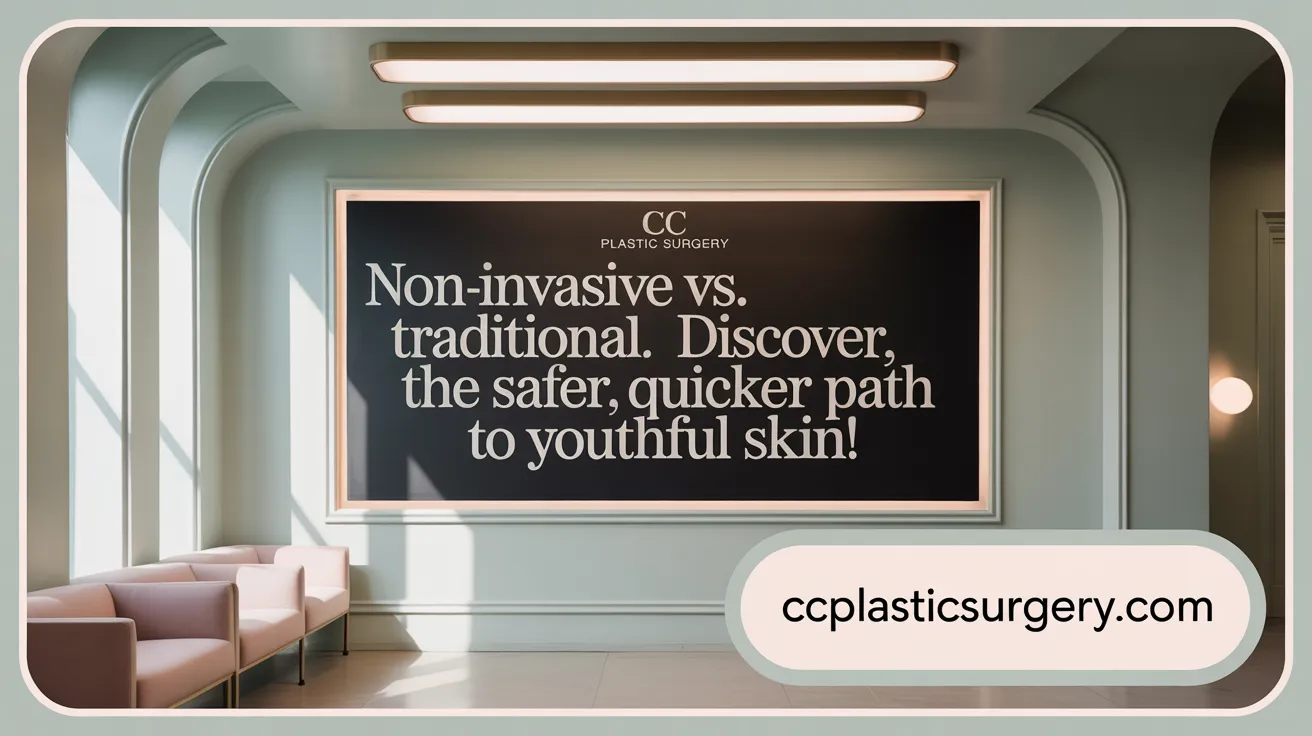
Ablative laser resurfacing removes the outer skin layers by vaporizing them, leading to tighter and smoother skin through collagen stimulation. Common ablative lasers include CO2 and erbium lasers, which are more aggressive and require longer recovery. Non-ablative laser resurfacing , in contrast, heats the skin beneath the surface without damaging the outer layer, promoting collagen production with minimal downtime.
Both ablative and non-ablative treatments benefit from fractional laser technology , which delivers laser energy through thousands of tiny treatment zones or microthermal columns. This approach allows unaffected skin between treated areas, accelerating healing, reducing complications, and enabling multiple sessions with less discomfort.
Ablative laser resurfacing typically demands a longer recovery period of 5 to 21 days with side effects like redness, swelling, peeling, and risk of scarring. Non-ablative procedures present minimal recovery time ; most patients can resume daily activities immediately, with transient redness that can be concealed by makeup. Side effects are generally mild, including temporary skin discoloration and swelling.
Non-ablative laser treatments are ideal for patients seeking skin improvement for wrinkles, age spots, scars, and sun damage without invasive procedures. While less dramatic per session compared to ablative lasers, their safety and minimal downtime make them suitable for gradual rejuvenation and maintenance.
Patient selection is crucial; non-ablative lasers are appropriate for those with realistic expectations and certain skin concerns. A thorough medical history and skin evaluation must be conducted to exclude contraindications such as active skin infections or predisposition to scarring. Preparation includes avoiding tanning and blood thinners. Treatment should be performed by qualified professionals adhering to safety protocols to minimize risks.

Cape Cod Plastic Surgery is led by Dr. Marc Fater, an experienced, board-certified plastic surgeon dedicated to providing personalized and high-quality patient care. Under his leadership, the clinic prioritizes expert oversight and hands-on involvement in all aspects of surgical and nonsurgical procedures.
The practice emphasizes a patient-centered approach, beginning with thorough consultations to understand individual aesthetic goals and medical history. Customized treatment plans are developed using advanced surgical techniques and minimally invasive options, ensuring tailored solutions that reflect each patient's unique needs. This personalized care fosters safety, comfort, and optimal outcomes.
Operating within a fully accredited hospital setting, Cape Cod Plastic Surgery adheres to stringent federal and state safety regulations. The facility is equipped with modern resources and staffed by certified anesthesiology professionals, providing a secure environment that minimizes risks and enhances patient safety throughout treatment and recovery.
The clinic’s team consists of board-certified plastic surgeons and highly trained clinical staff. This extensive expertise ensures the application of best practices, reduces complication rates, and delivers superior aesthetic and reconstructive results.
From preoperative assessment to postoperative care, Cape Cod Plastic Surgery strictly follows rigorous infection control protocols and patient safety guidelines mandated by regulatory agencies. This compliance ensures that every procedure is performed under the highest standards of clinical excellence and safety.
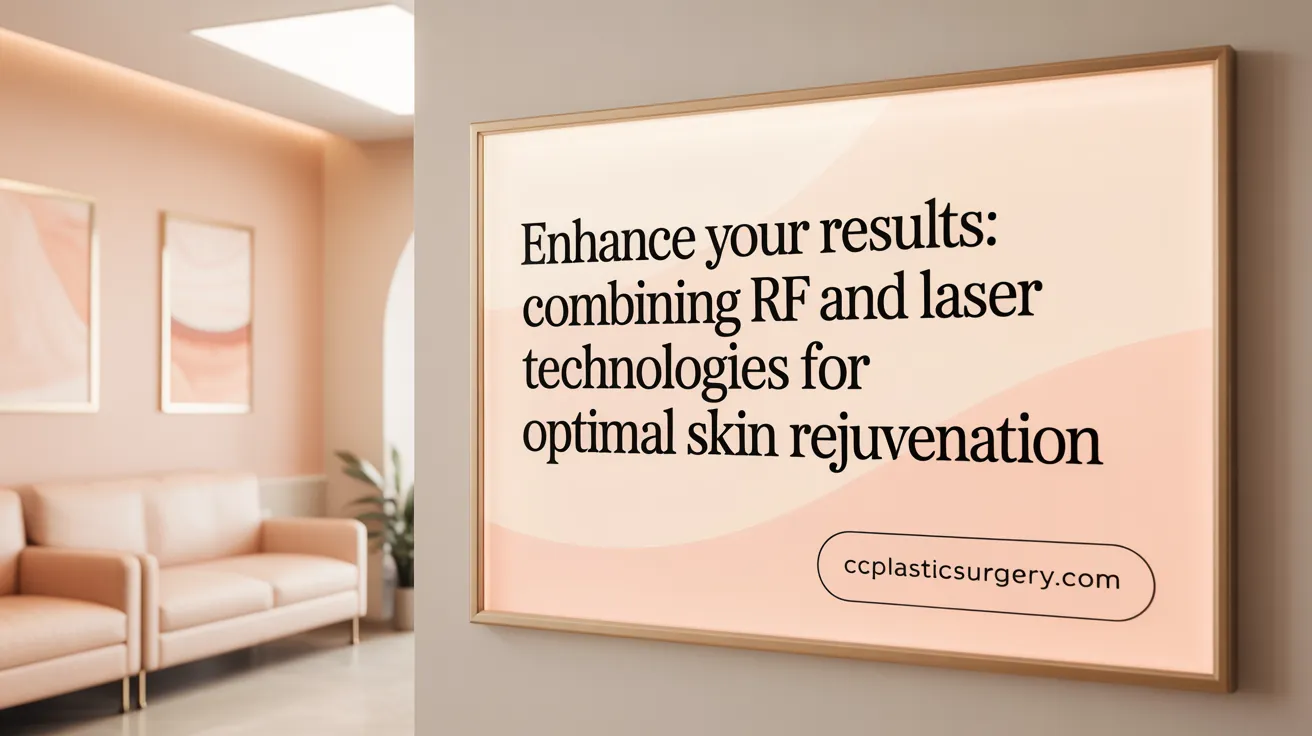
Radiofrequency (RF) treatments have emerged as a popular option for non-surgical skin tightening, utilizing energy waves around 450 kHz to heat the deeper skin layers without damaging the surface. Unlike lasers, which typically use focused light energy to target skin layers and stimulate collagen, RF penetrates more deeply and broadly, promoting collagen and elastin production for firmer and tighter skin (RF skin tightening technology).
Laser treatments, including non-ablative laser rejuvenation, create microthermal zones to induce controlled skin injury for rejuvenation. RF offers a different mechanism by heating tissues uniformly beneath the skin, making it effective especially for skin lifting and tightening.
Clinicians often integrate RF and laser therapies for comprehensive results. While laser rejuvenation addresses surface irregularities like wrinkles, age spots, and scars primarily through collagen stimulation and resurfacing (improving wrinkles and age spots, treating scars and sun-damaged skin), RF complements this by targeting overall skin laxity deeper below the surface (RF treatment and skin tones safety. This combination can maximize skin tightening, improve texture, and enhance youthful appearance with minimal downtime.
When delivered by trained, board-certified plastic surgeons or professionals using FDA-cleared RF devices, radiofrequency treatments boast an excellent safety record. The devices include built-in monitoring to prevent thermal burns and overexposure. Side effects are typically mild and transient, such as temporary redness, swelling, or tingling sensations.
Although RF energy has been classified by the World Health Organization as possibly carcinogenic based on limited evidence, extensive research has not confirmed any direct cancer risk in humans from medically administered RF treatments (Radiofrequency and cancer risk.
RF treatments can achieve deeper skin tightening safely across various skin tones without significant risk of permanent discoloration, a noted potential complication in laser therapies (RF penetration depth vs lasers. Additionally, RF procedures often involve minimal discomfort due to the use of topical anesthetics and have shorter or negligible recovery periods (minimal pain laser procedure.
Patients who are concerned about downtime or bruising may find RF a suitable complement or alternative to ablative or fractional laser procedures. The deeper penetration of RF energy can improve elasticity and firmness beyond the reach of most lasers (Benefits of skin tightening with lasers.
Advanced cosmetic practices, including those with board-certified plastic surgeons and specialty dermatologists, incorporate RF treatments alongside lasers and other modalities to tailor rejuvenation strategies. Such clinics prioritize patient safety through thorough consultations, medical history review, and personalized treatment selection (Choosing qualified RF treatment providers.
Combining RF with laser-based therapies allows clinicians to address multiple skin concerns simultaneously—wrinkles, pigmentation, skin laxity—and optimize patient outcomes. These multi-modal plans reflect a commitment to providing minimally invasive, effective procedures that enhance skin appearance while minimizing risks and recovery time (Non-ablative laser rejuvenation benefits.
Non-invasive laser procedures, including non-ablative and fractional laser rejuvenation, offer effective treatment options for wrinkles, age spots, scars, and sun-damaged skin. These treatments work by stimulating collagen production through controlled skin heating without surface injury.
Patients should anticipate multiple sessions to achieve optimal and lasting results. Realistic expectations regarding gradual improvement and maintenance are essential.
Recovery time for non-invasive laser treatments is minimal. Most patients experience only mild redness, swelling, or tingling, which can be easily managed and camouflaged with makeup. Post-procedure care involves moisturizing, sun protection with SPF 30 or higher, and avoiding direct sun exposure.
Selecting a qualified, board-certified provider and receiving treatments at accredited facilities ensure safety and maximize effectiveness. Expertise in personalized consultations helps tailor treatment plans for individual skin concerns and expectations.
These laser treatments represent a valuable approach to skin rejuvenation with minimal discomfort, allowing many patients to return to daily activities promptly while enhancing skin texture, tone, and overall youthful appearance.

December 21, 2025
Explore best procedures for aging skin - from non-invasive treatments to surgical options - and see downtime, costs, and results.
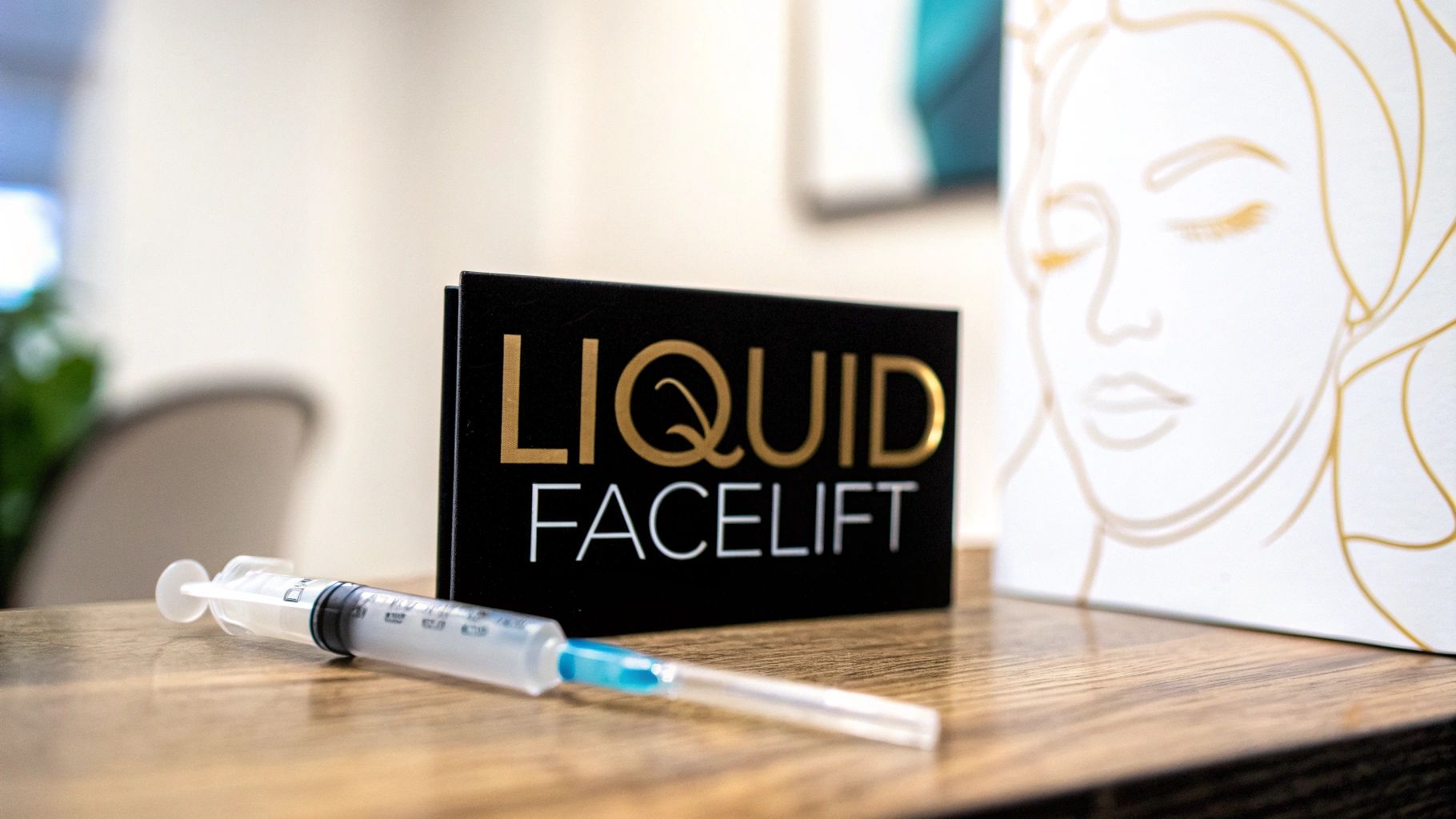
December 20, 2025
What is a liquid facelift? Learn how dermal fillers and neuromodulators restore youthful contours without surgery, with benefits, costs, and expected results.

December 19, 2025
Wondering how long before botox kicks in? Discover a day-by-day timeline, key factors, and when you will see the full effect.